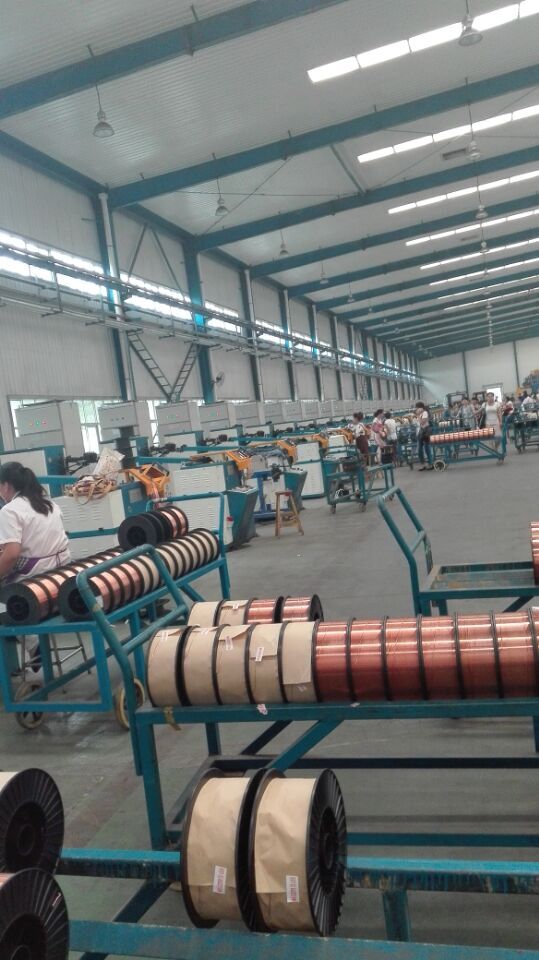Choosing the Right Electrode for Your Welding Needs and Techniques
Understanding Electrode Welding Rods A Comprehensive Overview
Welding is an essential process in manufacturing, engineering, and construction, as it facilitates the joining of materials, typically metals or thermoplastics. Among various welding techniques, electrode welding stands out, and at the heart of this process are the welding rods. In this article, we will delve into the world of electrode welding rods, from their types and applications to their advantages and best practices.
What is an Electrode Welding Rod?
An electrode welding rod is a crucial component in the arc welding process. It serves both as a current conductor and a filler material, melting and fusing the base metals when subjected to an electric arc. When electricity is passed through the rod, it generates heat through resistance, allowing it to melt and form a weld pool that bonds the materials together. There are two primary types of electrodes consumable and non-consumable.
- Consumable Electrodes These rods melt and become part of the weld. They are commonly used in Shielded Metal Arc Welding (SMAW) and are coated with flux to protect the weld pool from contamination and oxidation. - Non-consumable Electrodes Typically made of tungsten, these electrodes do not melt during the welding process. They are used mainly in Gas Tungsten Arc Welding (GTAW), where an external filler material might still be required.
Types of Electrode Welding Rods
Electrode welding rods come in various types, each tailored to specific applications
1. Mild Steel Electrodes These are the most commonly used electrodes, suitable for general-purpose welding. They provide strong welds for structural applications. 2. Stainless Steel Electrodes Designed for welding stainless steel materials, these rods contain alloys that ensure corrosion resistance and maintain the aesthetic quality of the welded joints.
3. Cast Iron Electrodes These rods are specially formulated to weld cast iron, addressing the unique challenges presented by this material, such as brittleness and different expansion properties.
4. Alloy Electrodes These rods are used when welding metals that require specific mechanical properties. They’re often used in high-strength applications.
5. Specialty Electrodes There are various specialty rods available for unique materials or conditions, such as low-hydrogen electrodes for high-strength steels and nickel-based electrodes for welding dissimilar metals.
Applications of Electrode Welding Rods
Electrode welding rods are employed in a myriad of applications, spanning industries such as
- Construction Used in structural steelwork, bridges, and buildings. - Manufacturing Essential in producing machinery, automotive components, and heavy equipment.
- Shipbuilding and Marine Applications Used for welding ship hulls, ensuring their integrity and durability against harsh marine conditions
.electrode welding rod

- Repair and Maintenance Frequently utilized in repair shops for fixing machinery and equipment due to the versatility and ease of use.
Advantages of Using Electrode Welding Rods
The use of electrode welding rods presents several advantages
- Ease of Use They are relatively easy to handle, making them suitable for both novice and experienced welders.
- Portability Electrode welding equipment is often lightweight and easy to transport, allowing for work in various locations, including remote sites.
- Cost-Effectiveness Consumable electrodes are generally inexpensive, providing a cost-efficient solution for many welding projects.
- Versatility A wide range of electrodes allows for adaptation to different materials and welding conditions, enhancing practical usage.
Best Practices for Using Electrode Welding Rods
To achieve optimal results with electrode welding rods, it is important to follow best practices
1. Select the Right Electrode Choose the appropriate type for the materials being welded. 2. Maintain Proper Technique Follow proper welding techniques such as angle, speed, and distance to ensure strong welds.
3. Prepare the Base Material Clean and prepare surface materials to remove contaminants, ensuring a high-quality bond.
4. Monitor Welding Parameters Keep an eye on voltage, amperage, and travel speed, adjusting as necessary to prevent defects.
5. Follow Safety Procedures Wear personal protective equipment (PPE) and adhere to safety protocols to prevent injuries.
Conclusion
Electrode welding rods are indispensable tools in the welding process, contributing significantly to various industries by ensuring strong and durable connections between materials. By understanding the types, applications, advantages, and best practices associated with electrode welding rods, welders can enhance their skills and improve the quality of their work. Whether you are involved in construction, manufacturing, or repair, mastering the nuances of electrode welding will undoubtedly prove to be a valuable asset in your toolkit.
-
Premium SG2 Welding Wire | High-Quality MIG/MAG for SteelNewsAug.10,2025
-
E309 Welding Electrode: Premium Stainless Steel Stick RodsNewsAug.09,2025
-
Premium Solid MIG Wire for Strong, Reliable WeldsNewsAug.08,2025
-
E6010 Cellulose Electrode: Deep Penetration Steel Welding RodNewsAug.07,2025
-
Premium E316L Welding Rod for 316L Stainless SteelNewsAug.06,2025
-
Premium AC Stainless Steel Welding Rods - Durable & Corrosion-ResistantNewsAug.05,2025


